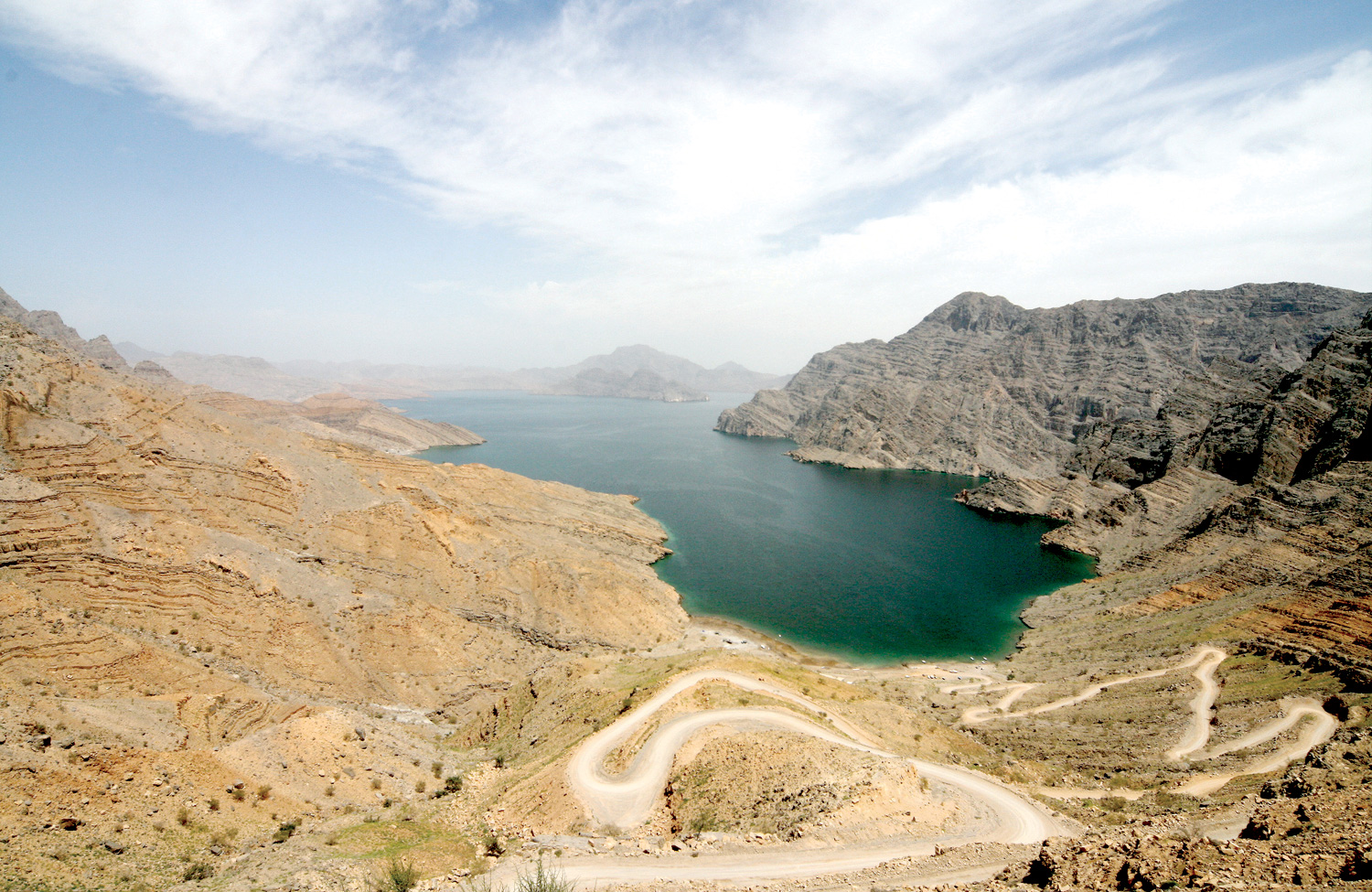

Muscat: Mountains, wadis, springs, caves and rock formations create a unique geological symphony in the Sultanate. The Ministry of Tourism is planning to release a mobile application to capture this geological diversity to attract more tourists from across the Sultanate. This app will initially cover 30 geological sites in the Muscat Governorate.
Dawood bin Sulaiman al Rashidi, Assistant Director of Tourism Product Development in the Directorate General of Tourism Development, said, “The Ministry of Tourism is striving to improve services. This is the reason why the MoT is focusing on the app which would enable tourists to explore the geological heritage, rock formations, and other natural wonders. He said the app would be available in German, English, Arabic and French. It includes maps for Muscat, geological sites, information about them, and directions to these sites. By unveiling the digital application, MoT’s aim is to create awareness on Oman’s natural wealth in other countries.
The application is also linked to MoT app Muscat Geoheritage. He said that these sites were visited by many researchers and university students to identify and explore natural geological features formed over different periods of geological time.
Wadis
Among the many wadis of the Sultanate, Wadi Ghul is part of the Al Hajar mountains, which is made of limestone rocks. The rocks in the wadi have texture of glass as they are shaped by the splash of water. In Wadi Auf, which has limestone, one can see some rocks dating back to the Cretaceous period. There are silt rocks that turned into sharp spikes resembling pencils.
Wadi Al Sahtan is also rich in sedimentary rocks. The soft rocks at the bottom of the wadi point to continuous flow of water in the past and in the area around the village of Khadra, located a few kilometres into the wadi.
After Wadi Mistal, the visitor can pass through a limestone range dating back to about 120 million years. Some white lines which overlap the rocks point to calcite rocks, which are relatively common calcium carbonate, towards the west of Al Ghubra village, 5 kilometres from the oldest residues of some of the glacial deposits in Oman.
Ithabat Teeq bore is one of the biggest geological sites of this kind in the world. The volume of the bore is 300 million cubic metres. It is part of the remains of a very large cave which collapsed in the past. White limestone is also found on both sides of Wadi Al Khoudh, south of Muscat Express Way. This was formed at the bottom of the sea when this area was rich in marine life. The very large bend in the rocks, known as Al Tiyyah Al Miq’ara, is at the entrance of Wadi al Meeh in the town of Al Hajar on Muscat-Qurayat road, where the sedimentary layers are in to U-shape.
The front of the rock formation “Tiyyah Al Ain”, is in oval shape like an eye formed 250 million years ago. Similarly, there is Al Birak Al Waghlah spring in Dima W’attayeen with massive geological importance.Islands and caves
The Sultanate is also rich in mountains and caves, such as the porous limestone deposits in the Jabal Akhdhar or fossilised waterfalls. There is Jabal Mishatt, which is one of the most important rocky sites on Bahla-Ibri road. In Jabal Akhdhar, there are dark and thin layers, which indicate that it was formed 251 million years ago.
There are also wonderful geological sites east of Wilayat Mirbat which is formed of crystalline rocks. Some rocks date back to 1,300 million years and are considered to be the oldest rocks in Oman. There are mountain rocks in the “Jinn Cave” on the Qurayat-Sur road. This limestone cave dates back to 45 million years ago. The area of this cave is 4 million square metres. It is considered to be the largest cave in the world. The Al Hoota cave is made of limestone rocks. The cave’s stalactites hanging from its roof draw many visitors
The Daymaniyat Islands form the charming 20 km long archipelago of Oman, which is part of a natural reserve. At high tides, seawater recedes a few hundred metres, leaving behind shallow lakes. Ras Madrakah is considered one of the most beautiful geological sites in Oman. It has dark slopes and white beaches near marina Bandar Al Rawdha, less than 20-kilometre drive on the magnificent road from Qantab to Bandar Al Khairan overlooking a coastal area with a number of submerged wadis.
Tourists can see a striking combination of nature’s harmony in the Ras Ruwais peninsula, 60 kilometres northeast of the town of Hajj in Wilayat Mahut.
The lagoons, which are located on the north-west coast of Al Kuhl in Wilayat Al Jazir, turn pink due to budding of Donalella Algae in salty water.
The Ras Madrakah Island is also considered one of the most beautiful geological sites in Oman for its dark ouviolite slopes and white beaches.
The deserts of Sharqiyah are also an attraction for tourists. It looks like a sea of deserts. One of the most beautiful geological landmarks in Oman is less than one kilometre from Shell’s state-of-the-art fuel station. The rock formations consist of fragile limestone deposits.
The Sultanate has sites rich in white dunes, such as the coastal village of Al Khaloof in Al Wusta Governorate overlooking Ghabba Hashish. It is located only 40 kilometres northwest of the village Hajj.
The coast extends south of Al Khaloof towards the city of Duqm. This is one of the few areas of Oman where the dunes are white. These dunes are mainly composed of calcium carbonate, which is transported by wind from nearby beaches in an exquisite landscape that attracts tourists.
Oman Observer is now on the WhatsApp channel. Click here



